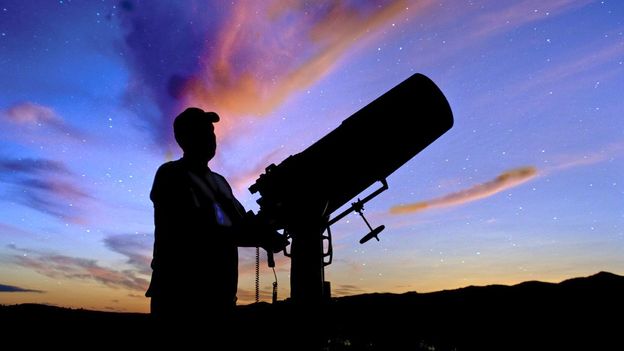
Reflecting Telescopes
Review of 5 Models for 2022
Reflecting telescopes are the most commonly used telescope among astronomers today. They use its primary mirror to gather and focus light, while the other is used to reflect that light back to you. The two typical examples are the Newtonian reflector (so called because it was developed by Isaac Newton) and the Dobsonian telescope.
They each feature a concave mirror at the base and a smaller diagonal mirror near the top. They provide great image quality and you get plenty more light collected for your cash. The Dobsonian comes mounted on an easy to use base that is a ‘point and shoot’ style. However, there are plenty of reflecting telescopes on the market today, so it can be difficult to know where to start looking for it.
We have reviewed a good number of these reflecting telescopes in the hope of helping you narrow down your search. We are providing you details of the five that we like the most.
Our Best Reflecting Telescopes
Celestron PowerSeeker 127EQ

- Unbeatable value for money.
- Largest aperture of all the Celestron PowerSeeker scopes.
- Lightweight and compact, with a short 20-inch tube.
- Ultra-portable and easy to carry around.
- Beginner friendly.
Orion StarBlast II 4.5

- Great optics
- Great accessories
- Decent aperture
- Wide field of view
Orion SkyQuest XT8

- Large aperture for a low price
- Decent optics and mechanics
- Very good single-speed Crayford focuser
- Fairly portable
- Spring tensioning system for balancing
Celestron NexStar 130

- Wide field of view
- Handheld computer makes it easy to find celestial bodies
- Weighs only 18 pounds for simple transport
- Deep views of the sky
Sky-Watcher Flextube 300 SynScan Dobsonian
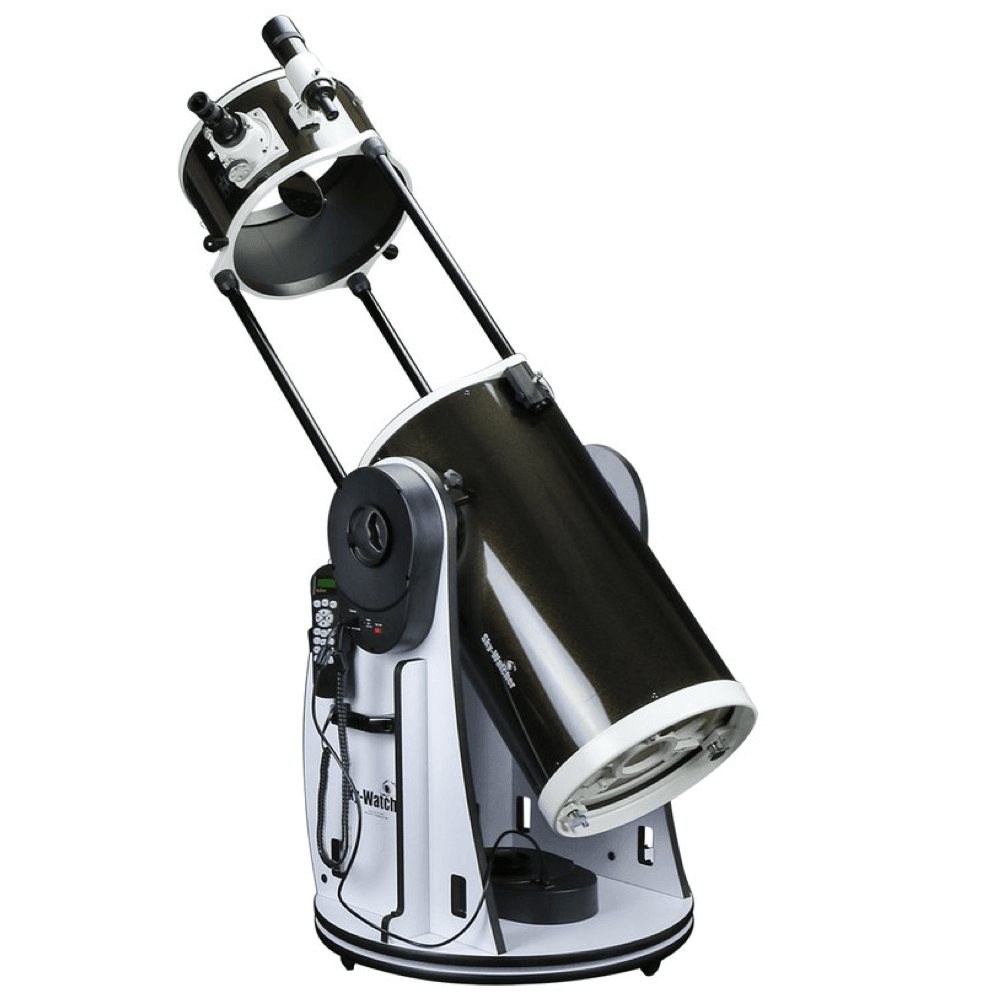
- LARGE APERTURE
- BUILT-IN WI-FI
- ALL METAL GEARING
- NNOVATIVE COLLAPSIBLE DESIGN
Best Reflecting Telescopes for 2022 – Full Reviews
Cheapest Reflecting Telescopes: Celestron PowerSeeker 127EQ

| Type | Aperture | Focal Length | Mount | Other Sizes |
| Newtonian Reflector | 5″/127mm | 1000mm, f/7.9 | Equatorial | 50/60/70/80/114 |
The Celestron 127 EQ PowerSeeker is an affordable reflecting telescope geared towards stargazing teenagers who want a good viewing experience, but don’t want to invest a fortune in their new hobby. Consistently ranked among the top reflecting telescopes in its price range, this model has won numerous awards and is produced by a manufacturer that has been in the business for more than 50 years.
With this model, Celestron has really played to their strengths, which is delivering decent quality for a fair price. In this case, the young astronomer in your life gets 5 inches of reflecting telescope on an equatorial mount and all for $200 or less.
The telescope is very easy to assemble, and you don’t need a single tool to get the job done. In terms of portability, the Celestron 127 EQ PowerSeeker is the perfect in-between telescope, being light and compact enough for traveling, but not so small that it limits your ability to get a clear view of the sky. In addition, a very-easy-to-transport collapsible aluminum tripod accompanies the telescope and includes a storage tray for holding the spare eyepieces and accessories within easy reach when you’re stargazing.
What You Can See With Celestron PowerSeeker 127EQ?
This is a Newtonian reflector scope. It uses a 5″ mirror, and a smaller secondary mirror, to reflect and focus the image to an eyepiece on the side of the scope. Despite its price, the Celestron 127 EQ PowerSeeker has very good optics, which come with aluminum reflective coatings that makes the image you see very well defined. In addition, the 127mm (5″) aperture gives you the ability to view a wide variety of objects in the night sky, including the moon, bright planets, clusters of stars and nebulae.
The 127EQ is supplied with a decent starter pack of accessories, including 20mm and 4mm eyepieces, which provide 50x and 250x magnification respectively, and a 3x Barlow lens which can be used with the 20mm eyepiece to give 150x magnification.
An equatorial mount is not the best for younger children – it needs to be polar aligned and can be quite hard to set up (it’s bigger than it looks!). However, for teenagers, this is a great way to learn astronomy. Equatorial mounts align with the Earth’s rotation, so when you have an object in the eyepiece it is much easier to track.
Verdict
This is a well priced starter model for teenagers (click the button below to see today’s Amazon price). With its equatorial mount there is more going on to keep an enthusiastic mind occupied, and its five inch mirror will deliver rewarding views of the night sky. The teenager in your life will be very excited to own this. Beginners will find that this telescope perfectly meets their needs, and over time as they progress with the hobby, you can expand the functionality of the model with additional eyepieces.
Pros
- Optic quality – By getting the Celestron 127EQ PowerSeeker Telescope, you are investing in a top quality optical instrument that offers an exceptional viewing experience.
- Magnification – The fact that this scope comes with a 3x Barlow lens is yet another awesome advantage. The magnification of both eyepieces included will be tripled for beautiful images.
- Accessories – You get plenty of accessories when you purchase the Celestron PowerSeeker 127EQ telescope. From the 3x Barlow lens to the two eyepieces, tripod, and accessory tray, you will have everything you need to start using the scope once you receive it.
- Easy assembly
- Portable
- Affordable price
Cons
- The telescope will require more care – Again, we are dealing with a Newtonian Reflector telescope, so the primary mirror will be exposed to air and dust. This scope is quite fragile, so you should take great care of it.
- You will need to upgrade the eyepieces – We’re not talking about an immediate update, but, in time, you will need to add some eyepieces to your telescope.
- Slow motion controls – Some customers report the slow motion controls being finicky, in that you can feel the scope vibrating with each turn, which can cause the image to distort.
- Hard for younger children to setup
No products found.
Affordable Reflecting Telescopes: StarBlast II 4.5 EQ
| Type | Aperture | Focal Length | Mount | Other Sizes |
| Reflector | 4.5″ / 114mm | 450mm, f/4.0 | EQ-1 Equatorial | n/a |
The Orion StarBlast II 4.5 EQ is certainly a great choice for the beginning astronomer. While there are reflecting telescopes offering slightly more aperture and ease of use than the StarBlast II at the same price point, the convenience of an equatorial mount and full-sized tripod are great – provided you’re willing to take the time to learn to use the mount, and allocate additional storage space for the scope.
The StarBlast II 4.5 EQ from Orion is a reflecting telescope that offers particularly good lunar and planetary viewing. Highlights include its 4.5″ parabolic mirror, which is a great size for new astronomers, and a price which inexperienced stargazers are willing to pay (click the button below for Amazon’s price). Included with the scope are 25mm and 10mm Plössl eyepieces, giving 18x and 45x magnification, respectively. Used with the 2x Barlow lens also included, you can get 36x and 90x magnification.
The StarBlast II sits inside two felt-lined tube rings that bolt onto the EQ-1 mount’s top plate – larger/more expensive equatorials use a Vixen dovetail and saddle which is slightly more convenient, but the simple system used with the StarBlast II works just fine. Setting up and using the EQ-1 is pretty easy – just level the tripod, put the mount/scope together, balance the scope on both axes, and roughly line up the mount’s polar axis with Polaris.
What You Can See With StarBlast II 4.5 EQ ?
The StarBlast II’s high-quality optics will show you Mercury and Venus’ phases, along with the dark albedo patches and ice caps on Mars. You can also see Jupiter’s cloud belts, the Great Red Spot and its 4 large moons. Saturn’s rings, the Cassini Division, the planet’s cloud belts, and about half a dozen of its moons are visible. Uranus and Neptune can be spotted as small turquoise and azure dots respectively, though locating them can be a bit tricky. However, you won’t see fainter galaxies and nebulae, especially if you’re viewing under lots of street lighting. If that’s your plan, look at the more generous aperture of the Dob above.
Verdict
Overall, this scope is great for those just starting out, but who have more than a passing interest in stargazing. It’s budget-friendly, with plenty of accessories to make it useful right out of the box—at least, once the set-up is complete. While it may not be the highest quality available, it is certainly impressive for its price-point, and it provides excellent opportunities for home astronomers to practice their skills and enjoy spectacular views.
Pros
- Wide field of view
- Lightweight and portable
- Easy to use
- Compatible with high-quality accessories
- Suitable for astrophotography
- Great for beginners and families with children
- Sturdy equatorial mount
- Provides clear, sharp images
- Useful slow-motion controls
Cons
- Extensive assembly required
- Not suitable for use in daylight
- The 10mm eyepiece does not allow for adequate focusing
- The tube has no dovetail bracket
- Equatorial mount setup takes some getting used to
No products found.
Big Aperture Reflecting Telescopes: Orion SkyQuest XT8
| Type | Aperture | Focal Length | Mount | Other Sizes |
| Dobsonian\Reflector | 8″ / 203mm | 1200mm, f/5.9 | Dobsonian | 4.5″, 6″, 10″ |
The Orion Skyquest XT8 telescope is a Dobsonian reflector tool, which is considered one of the best choices for amateurs who are just getting started in the astronomy field. As a mid-range telescope, the Orion Skyquest XT8 Dobsonian reflecting telescope manages to strike the perfect balance between efficiency, affordability, and portability. The brand’s reputation precedes it: Orion Dobsonian reflecting telescopes are known for their sturdy frames and crisp images.
It boasts a large 8″ aperture, making this the biggest of our beginner telescopes. Its primary mirror collects and focuses plenty of light for viewing all kinds of objects in the night sky. In fact, compared to a 6″ scope, this Dob will gather 73% more light for much improved viewing.
What You Can See With Orion XT8 ?
Even from the suburbs, the XT8 shows a lot. The entire Messier catalog (with the possible exceptions of M74 and M33 if you have lots of light pollution) is visible without a lot of difficulties, and you can start diving into the Herschel 400 and other dim deep-sky catalogs. On Mars, the XT8 will show up to a dozen or so features to the trained eye when Mars is close to Earth.
Jupiter’s cloud bands show lots of festoons and swirls. The Galilean moons of Jupiter are no longer mere pinpoints but tiny disks, with hints of color. Saturn shows several moons and intricate cloud bands, along with the Cassini and possibly Encke divisions.
Neptune’s moon Triton is visible on a decent night, and the lunar crater Clavius shows several dozen craterlets. However, unlike the NexStar 6SE, you will have to guide this telescope yourself. That shouldn’t be a problem though, as Dobsonian scopes are often seen as one of the best reflecting telescopes for beginners because of their ease of use.
Orion’s XT8 comes complete with a 2x Barlow lens and a 25mm Plössl eyepiece. These may just about be enough to get you started but you will want to invest in more eyepieces as soon as you get started.
The XT8’s tube fits across the backseat of most cars, so portability is not a problem. The tube and base are each only a little over 20 lbs, so most adults will have no issues hauling it.
Verdict
If you are happy with finding your own celestial objects and just want to begin your astronomy journey with great views, then the XT8 Dobsonian is the starter scope for you.
Pros
- Large aperture for a low price
- Decent optics and mechanics
- Very good single-speed Crayford focuser
- Fairly portable
- Spring tensioning system for balancing
- Simple setup and use
- Smooth manual tracking
- Huge optics for a low price
Cons
- Needs more eyepieces to be utilized to its full potential
- Red dot finder is of extremely limited utility
- Bulky and heavy to move
- Mediocre accessories will need upgrades
- There are no handles on the telescope that you could use to move it around faster.
No products found.
Hi-Tech: Celestron NexStar 130SLT
| Type | Aperture | Focal Length | Mount | Other Sizes |
| Newtonian Reflector | 5.12″/130 mm | 650 mm f/5 | Motorized Altazimuth | 127/102/90 |
This is a serious Telescope. NexStar130SLT will enchant and enlighten you for years ahead. If you decided that your type is reflector this is the model that has characteristic as a professional telescope and at the same time is easy to use as a telescope for beginners. This model is a recent improvement of 114mm Celestron. It is now more than 5 inches. You already know that aperture is quite essential for the reflecting telescopes – more photons reaching your eye, your camera or spectroscope. The more starlight reaching you, the deeper your understanding of the Universe will be.
The primary mirror is very high quality for telescope of this price list. Thin, but strong, “spider” holds smoothed and polished secondary mirror in stable condition and ready to reflect light into the eyepiece.
The telescope comes with two eyepieces. The large one, 25 mm, is very suitable to observe galaxies, and with a lunar filter – to admire the Moon. The other one, 9 mm, will show you more details about the Planets.
What You Can See With Celestron NexStar 130SLT
With NexStar130SLT you will able to see everything – from the cloud bands on Jupiter to far away nebula and individual galaxies outside of the Milky Way. This is all possible because of the power that this large classic Newtonian reflector gives in such a reasonable package. The versatility and power at an affordable price make this telescope perfect for both casual viewers and beginners.
Celestron NexStar130 is computerized and have “Go-To” function, which means you do not have to manually seek stellar objects in the sky. The telescope itself will do everything, but before that you have to align it. And here we must mention that Celestron has invented the easiest way to do this – Sky Align. Once you enter the date, time and location, you have to point the telescope at three bright objects in the sky without even knowing them. And that’s all! Celestron NexStar130 will then knows the entire sky above your head and you only need to choose from the menu what you’d like to observe. There are over 4000 objects: stars, planets, galaxies, nebulas … And if you find time to explore even half of them, then you will no longer be a beginner astronomer.
Verdict
This is a telescope that is perfect for a beginner astronomer who doesn’t need every feature under the sun to be satisfied with their telescope setup. The Telescope can still deliver amazing views and includes the handy automatic star finding features that you will want to show off. It’s very affordable and fun to use. It will show you almost everything in the night sky. If this is the first telescope that you are considering to buy, go for it. It is the cheapest computerized telescope with an aperture big enough to satisfy any hobbyist astronomer out there.
Pros
- Good Price: it is an affordable telescope with a decent aperture and computerized mount, there is no competition for it in that class. You can check the current price on Amazon.
- Easy to use: after a few moments with the controller, you will learn everything you need to know to control the telescope. It is very intuitive and easily operated instrument.
- Lightweight: it only weighs 17 pounds so you can move it with one hand. You can also separate the optical tube and the mount very quickly and put it in the car, which makes it highly portable and convenient.
- 2″ Focuser: you can use 2″ eyepieces with provided adapter. It is a unique feature in this class of telescope because many of them don’t have that option and you can only use 1.25″ eyepieces.
Cons
- Power: The motor uses up batteries fairly quickly
- Alignment: The date and time must be set after each use
- No astrophotography: if you are planning to do astrophotography, this is not the telescope you want. However, you can still do simple planetary or Moon astrophotography. It is just not suitable for deep sky objects.
No products found.
Professional : Sky-Watcher Flextube 300 SynScan Dobsonian
The larger the aperture of your telescope, the more light it will collect, allowing you to resolve finer details in astronomical objects and see deeper into outer Space. With a 12-inch objective, this foldable Dobsonian from Sky-Watcher matches the “light bucket” label.
Dobsonians are reflecting telescopes designed for their simplicity and with its GoTo capability plus a motorized alt-azimuth mount rocker, navigated by a SynScan handheld controller, getting great views of the night sky and calibrating the telescope has never been easier.
The sleek tube design is carefully designed to combine ease of use, exceptional portability and consistent performance in an affordable package. Unlike other tube designs, the SkyWatcher Flextube Dobsonian does not need to be disassembled between uses. It is transported as two compact pieces that can be assembled and ready for use in just seconds!
The patented Tension Control Handle allows users to add or reduce tension, thereby increasing or decreasing the friction between the optical tube and the sideboards. The SynScan™ AZ hand control allows you point your telescope at a specific object, or even tour the night sky at the touch of a button! The user-friendly menu system allows automatic slewing to over 42,900 objects. Even an inexperienced astronomer can master its variety of features in a few observing sessions. The patented dual encoder design allows the telescope to be moved manually whenever the user wishes – but with no need for re-alignment! The Sky-Watcher Dobsonian SynScan series combines the convenience and affordability of the traditional Dobsonian with the convenience of a computerized Go-To telescope.
What You Can See With Sky-Watcher 12″ DOB ?
Everything in deep-space appears brighter, and wider in extension with the Sky-Watcher 12″. Many of the more challenging to resolve objects in smaller diameter telescopes now reveal their essential structure. Objects just within the threshold of a 10″ aperture now appear more prominent and may be worth dwelling upon for extended periods. Comet hunters will delight in the fainter magnitudes that are possible to discern in the Sky-Watcher 12″.
Here at last is a telescope within the threshold to tackle elusive deep-space gems like the Horsehead Nebula in Constellation Orion. Located in Constellation Perseus, M76, is a very faint nebula of 11th magnitude. The SW 12″ will capture this baby like you want to see it. M97, a planetary nebula in Ursa Major is very faint, but as a serious amateur you will want to see it. No worries, the Sky-Watcher 12″ will fulfill your quest. M61, a spiral galaxy in Constellation Virgo, will reveal spiral arms as you would hope to see them, but you will need a SW 12″ telescope to resolve them well. The list goes on, and you will delight in planning your own journey of exploration.
Over 40,000 targets are offered in the database and, we have to say, that seeking out faint fuzzies was our first port of call with the Sky-Watcher Flextube 300 SynScan. With a focal ratio of f/4.9, this Dobsonian is fast enough for imagers to make use of all the photons that it will collect. With a little skill, you’ll be able to take some amazing images through this telescope.
Verdict
Although the Sky-Watcher Flextube 300 SynScan is heavy, its collapsible design makes it easier for you to fit in the trunk of your car whenever the need arises to seek out dark-sky parks or attend star parties. It has a hefty price tag, but given the aperture, imaging prowess and GoTo capability of the Sky-Watcher Flextube 300 SynScan, it’s a must-buy for hobbyists.
Pros
- LARGE APERTURE: Get a bright, bold viewing experience at a fraction of the cost of other optical designs.
- INNOVATIVE COLLAPSIBLE DESIGN: Unique strut design allows for optical tube to collapse for ease of portability while keeping collimation.
- BUILT-IN WIFI: Control your telescope using a smartphone or tablet with Sky-Watcher’s proprietary built-in wifi signal.
- ALL METAL GEARING: Using all-metal gearing on a pair of DC servo motors, the SynScan Dobsonian combines the precise automated tracking of a computerized GoTo telescope with the bright large-aperture viewing of a Dobsonian.
- 94% REFLECTIVE MIRRORS: Fully multi-coated borosilicate primary and secondary mirrors deliver exceptional views.
Cons
- STURDY AND LIGHTWEIGHT DESIGN: When fully assembled, the Dobsonian weighs 99.2 pounds fully assembled (46 pound tube, 53 pound base)
No products found.
2022 Best Selling Reflecting Telescopes by Amazon
No products found.




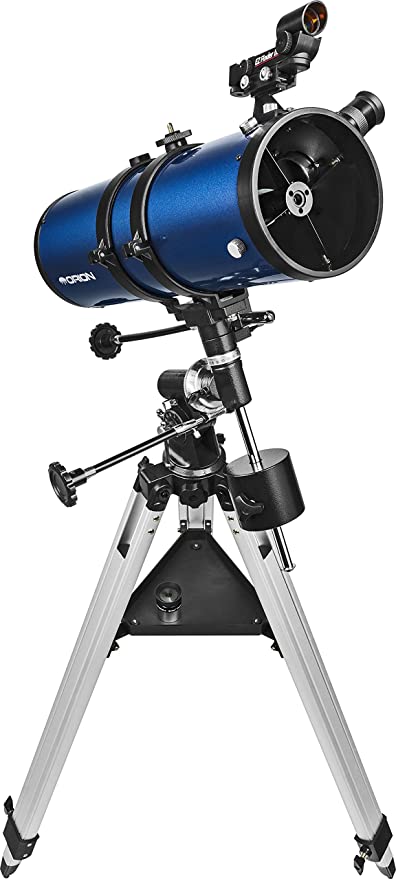
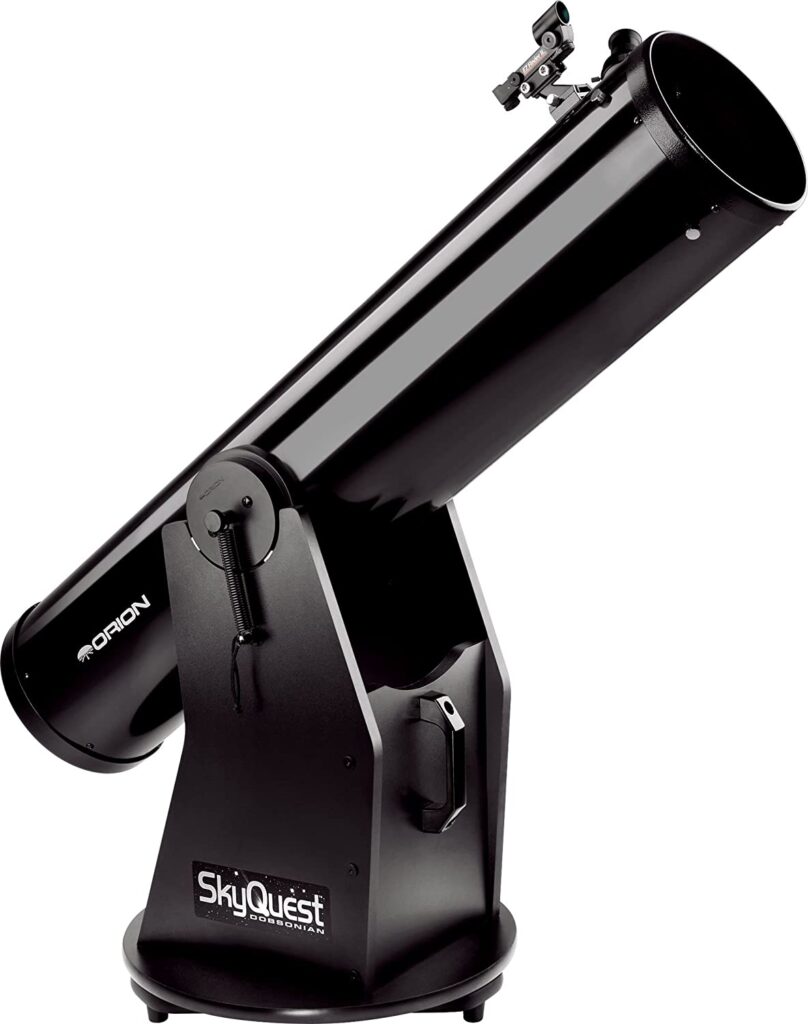
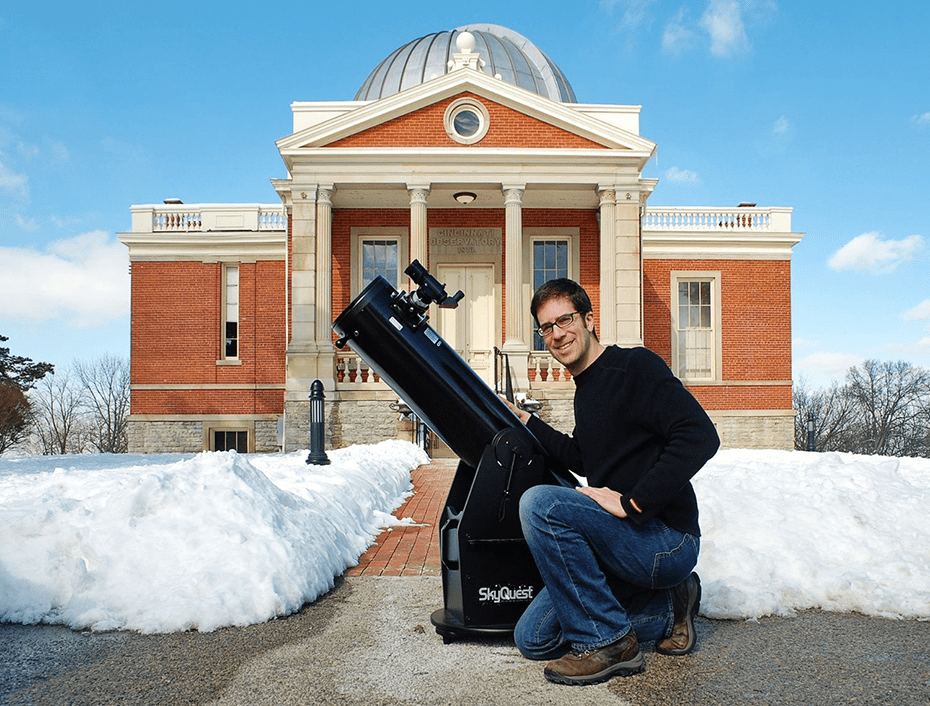
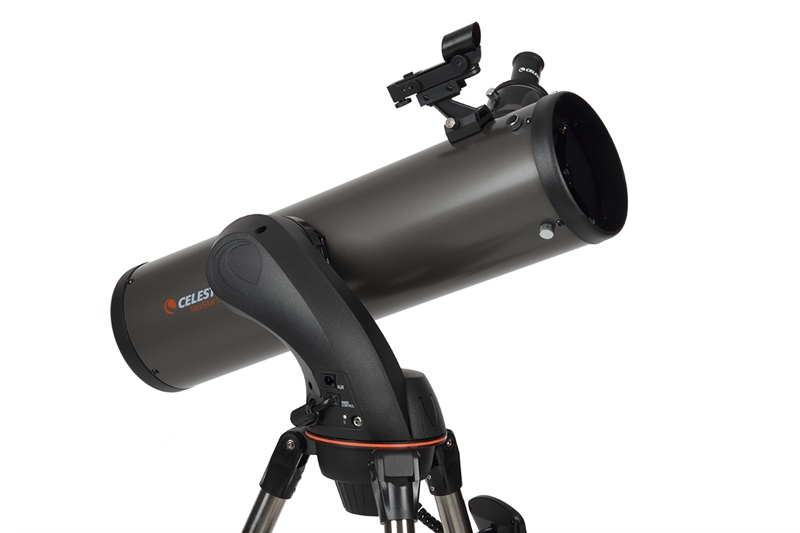


This is a very detailed review of the Celestron NexStar 130. I have looked at this very telescope and almost bought it. I believe you are correct when saying this is the best reflector telescope for beginners. I am still on the lookout for one and may end up coming back to this site to purchase it.Thanks for the info!
Hi Steve,
Yes, NexStar 130 is really really GOOD telescope! If you are little bit concern about the complexity, you shouldn’t be. It’s easy to manage it. For example, my first Telescope was catadioptric NexStar 6SE which is even more complex than this one, and I didn’t have any problem to use it properly form the very beginner. Get Telescope and look at the nightsky – no words can describe what is there!
Thanks for comment,
Cheers
Hi Ignat!
Man, you should see the telescope I have! It’s prehistorical compared to this treasure you got there!
The focal lenght is absolutely amazing! Not to mention the Star align function! With so many things to look for there, that is really helpful.
I got to get one of this for the summer nights!
Thanks for the review!
Hi Israel 🙂
I’m interesting to see how your old telescope looks like.
Yes, now days the Telescopes are really fascinating. You don’t need to know a lot about the night sky – they can find anything for you. It’s amazing. The optic is much more advance as well. Now they are gathering more light which means you will see much more deeper and clearer.
Thanks for the comment! You should take one and enjoy the Space out there :)))
Hi Ignat, thanks for your review about Celestron NexStar 130 telescope. It ignites my passion for observing the universe. I am a beginner and I believe the Celestron NexStar 130 will be the first telescope that I will first study before procure. Besides the black color finish, any other color variances available? Meantime, I wonder how the Sky Align work. It is pretty amazing that the telescope will automatically search for stellar object in the sky, after we programming in the date, time and location.
Hi there, and thanks for the comment.
You should know that, exploring the Universe is like one-way road. Once you step there you will never go back! It is a new world full with wonders!
Unfortunately I don’t thing that they have another color, But don’t worry because this telescope has so much features and the color is the last thing that you going to think about.
For example Sky Align is one of them. After you set the date, time and location you going to need to point 3 bright object in the sky, and then everything is set up. You just choose from the menu what you would like to see and that’s it – the telescope will find by itself.
Hi there,
Well done on posting this awesome review. This is something that I am not familiar with, but after reading your post, it has peaked my curiosity a little.
I often wondered about looking at the night sky and what can be seen, especially on a bright night sky.
This telescope has ticked all the boxes and I had a look at the price and I see that it’s very affordable for a beginner., especially when you have detailed all the extras that come with this telescopic instrument.
Best wishes and happy gazing
Cheers PB
Hi Phil,
You definitely should try looking trough Telescope. I remember my first time- was breathtaking! If you want to have some nice hobby – Astronomy is one of the best. This Telescope here can be really nice beginning 🙂
Cheers!
I’ve been interested in purchasing a telescope. As I began to explore the types out there I quickly discovered I hadn’t the slightest idea as to what would be good, great or bad quality. You have certainly helped me understand quite a bit better. You give all the details needed. Thanks.
Hi Josh
You are very welcome! For any other questions, please feel free to ask. I will be happy to help you!
Congrats,
Ignat